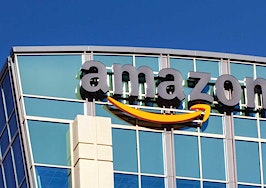Half the world today lives in cities — and, according to the United Nations, nearly 70 percent of the world will live in cities by 2050. At a recent National Association of City Transportation Officials conference in San Francisco, former Massachusetts Secretary of Transportation Richard Davey even went as far as to label this the “Century of the City.” Data shows that younger generations are leading this urban migration.
This new future presents an enormous opportunity for industries such as real estate, transportation, infrastructure, waste management, public health and energy. Real estate developers have already begun to capitalize on the opportunity through a new trend sweeping the nation you might not yet be familiar with called “micro-units.”
What is a micro-unit?
Although the exact definition can vary, a micro-unit is a dwelling under 500 square feet. Popularized in densely populated cities including Tokyo, Hong Kong and Bangkok, they have begun popping up in U.S. cities such as Seattle, Boston, New York City and San Francisco in a big way. Most importantly, they made it on a recent “Portlandia” episode.
Here are five reasons why the micro-unit is the dwelling of the future:
1. What’s old is new again.
Not everyone sees micro-units as revolutionary, but rather, as a blast from the past.
“Our cities are starting to move towards what they once were, pre-automobile,” former Urban Land Institute fellow Gabe Klein says. “Dense, tenement-style housing was common in cities, often warehouses converted into subdivided micro-housing. Today’s micro-unit, often modular, 200-400 square feet but perhaps a bit nicer than the original, is really just the modern version of the urban experience.”
2. It makes financial sense.
Micro-unit builders themselves, such as Patrick Kennedy of Berkeley, California-based Panoramic Interests, see them as a part of a greater economic forces at play in San Francisco and elsewhere.
“Americans have moved away from gas-guzzling cars; we are trying to move away from space-guzzling housing,” Kennedy says. “Sky-high land and construction costs in San Francisco make it all but impossible for mere mortals to rent an apartment here. Building smaller and smarter is one way to bring costs down.”
3. Micro-units get rented.
Kennedy’s firm is known for doing the impossible: successfully building new housing supplies in Berkeley for over a 20-year period. After successfully selling projects in Berkeley to Equity Residential, Kennedy turned his focus across the bay to San Francisco. His latest creation, The Panoramic, at the corner of 9th and Mission streets in Mid-Market, is a project with 160 micro-units.
When The Panoramic is completed this summer, it will have extra bike parking, a “heated Uber waiting bench” and modern amenities. What’s the one standard facility that is not available? Parking. Instead, car-free residents will rely heavily on nearby public transportation, bike sharing, on-site City CarShare, and on-demand services such as Uber and Lyft.
When asked about the effect micro-units can have on cities such as San Francisco, Kennedy says, “By providing more housing, at a lower cost, close to transit and close to the jobs, they are an unequivocal win for the city. Especially since they are car-free — 100 percent upside for cities and for residents.”
4. Goodbye, parking minimums.
Land use and parking are indelibly linked. An outdated law in most cities obligates new developments to have parking minimums. For years, developers never imagined that new residents would move in without wanting or needing a parking space. As no-parking micro-units proliferate, some are calling for the repeal of these archaic laws in favor of letting the free market decide where and when to build parking.
One place that has become ground zero for the debate on correcting municipal parking policy is Seattle. In an official SDOT report published on April 13, 2015, Seattle’s mayor made it clear the city would change the old ways of addressing parking policy.
“Seattle is experiencing tremendous growth as our economy continues to expand and add tens of thousands of new jobs,” Mayor Ed Murray says. “It is our challenge to do more to ensure Seattle is affordable and livable for current and future residents. To do this, we can’t rely on the parking strategies of the 1950s. Instead, we must pursue innovative policies that will give residents more transportation choices and smartly manage our current parking supply.”
5. Cities are on board.
Old or new, micro-units are here to stay. High-growth cities should embrace these new developments to encourage smart infill developments close to mass transit. Micro-unit residents going car-free are a net win for everyone involved as the focus shifts away from parking.
Micro-units simply are the way of the future, for the reasons enumerated here and probably to meet new needs that haven’t arisen yet.
Ryan Croft is the co-founder and COO of Washington, D.C.-based TransitScreen, a live display of transportation data in building lobbies in 15 cities across North America. TransitScreen promotes all sustainable transportation options around a given location. When he is not traveling, Ryan works from TransitScreen’s San Francisco office.



